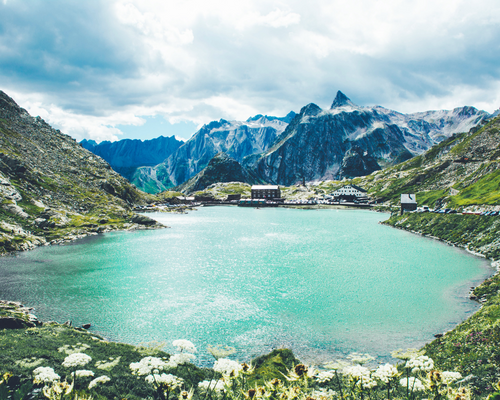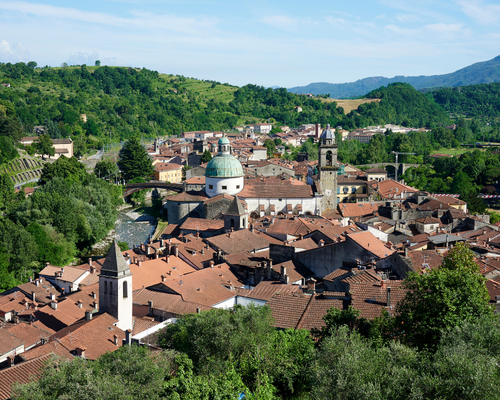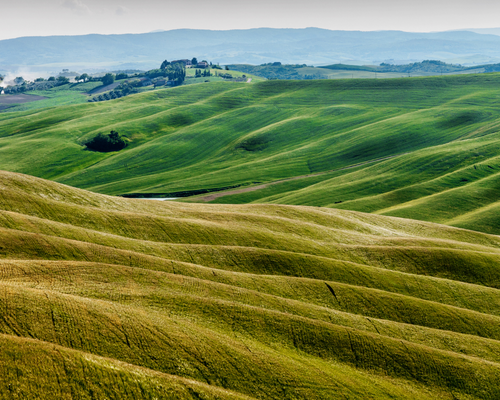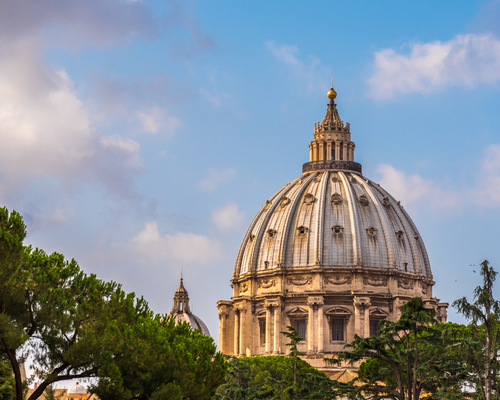

With its 1000 kilometers of official route running through the country - covering seven Italian regions and 140 municipalities - the Italian section of Via Francigena is surely one of the longest and most varied Caminos Europe has to offer.
As mentioned in our article comparing the Camino to Rome to the world-famous Camino de Santiago, while the latter tends to be more homogeneous in its scenery, the Italian section of Via Francigena offers an ever-changing scenario, ranging from the Italian Alps to the “tagliate” - typical Etruscan roads – of Latium, from the rice fields and plains of Lombardy to the lunar hills of Val d’Orcia, from tiny hilltop hamlets to gorgeous, well-known art cities. The landscape changes considerably in the span of just one week, with daily peaks of awe-inspiring beauty.
With such impressive variety, it may be difficult to choose which section to walk: should you start off on a high note and head to Tuscany to enjoy the most beautiful section of the route, experience the Italian itinerary from the very first steps in Aosta Valley, delight yourself with the delicacies of Emilia Romagna - a foodie's Mecca - or go against the current and walk into Rome first?
Although there may be no general answer to this very subjective question, we can give you a few suggestions on what to expect in each section of the route, from the peak of the Alps to the Dome of Saint Peter - and everything in between!

The Italian section of the route certaintly kicks off with a bang - just picture an glistening mountain peak surrounded by the rugged peaks of the Alps, up there where pilgrims have been welcomed and Great Saint Bernard dogs have been bred and trained for centuries. It then continues through tranquil mountain villages and meadows through the Roman city of Aosta, wineries producing the well-known local white wines, castles and ancient Gallic roads down to Ivrea, where the first typewriter was built by local industrial Olivetti.
This is the only "mountainous" section of the route - still, the elevations are perfectly approachable with some training and you should not expect to walk on mountain paths or exposed sections.
Please note that if you'd like to start from the Great Saint Bernard Pass you'll need to travel when the Pass is open - normally from June to September.
This soft, quiet and flat section of Via Francigena runs mainly among rice fields (if you'd like to see the spectacular landscape of the flooded rice fields, choose to travel between March and May) and Pavia's artistic beauties. This is not the most fascinating or exciting section of the itinerary, but it's suitable for beginners - perfect for testing your legs before facing more challenging sections.
This section does offer some gems we love mentioning: the Viverone lake provides some among the best sunsets of the whole itinerary, perfect to admire as you savor a glass of the local Erbaluce wine; one of the most beautiful cities of the whole itinerary, Pavia boasts a splendid old town centre, where the beautiful facades of palaces and churches guard all sort of artistic treasures; its covered bridge on River Ticino is among the most famous in Italy, and the cobbled streets and lively piazzas of the centre are always filled with university students and locals.
The most exciting aspect of this section is surely the local food scene - Emilia Romagna region is a foodie's mecca (inside a country that's a foodie's mecca itself) and can claim to be the birthplace of beloved Italian specialties such as tagliatelle al ragù, Prosciutto di Parma and lasagne.
Add the excitment of crossing the river Po with the boatman Danilo - a beloved character in many travelogues of the route - and exploring Fidenza, where the official Via Francigena headquarters are located and where you'll be able to see the bas-relief of the black Pilgrim used as a symbol of the whole route. This is a also a great section to test your legs and train for more challenging parts of the route!

An exciting and adventurous section taking you from the plains of Emilia Romagna to the ancient Monte Bardone Hill - today called Passo della Cisa, where you cross the Appennines and enter into Tuscany through the Tuscan Gate of Via Francigena. Plains and then hills and then mountains - this section has it all, including Medieval hamlets, castles and forests, and ends in the Northern part of Tuscany known as Lunigiana, the Land of the Moon.
Your first steps in Tuscany will be along forests paths and across a picture-perfect Medieval bridges leading you into Pontremoli, known for its imposing Castle - now hosting Pilgrims and the mysterious Statue Stele - and the delicious testaroli al pesto, an "aperitivo" of everything beautiful and delicious you'll encounter on your way through Tuscany.
This section of Via Francigena starts from mysterious Lunigiana and takes you to the walls of Lucca through the coast of Versilia - making it the only part of the itinerary to be on the sea and perfect to walk in Spring, where the sun is not so ferocious and the sea already perfect for a quick dip or just for a light sea breeze tickling your skin through the hiking clothes.
This section also includes Pietrasanta - a gem of a town known as "the Italian Athene" for its art galleries and sculptures decorating the beautiful Piazza, with the Apuan Alps - where the most famous marble in the world is extracted - as a background. Finally Lucca, a gem of a city, known for its botteghe, amphiteatre-shaped square and towers topped with holm oaks.
There is no doubt this is the most beautiful part of the itinerary: starting from the walls of Lucca - a gem of the city, known for its botteghe, amphiteatre-shaped square and towers topped with holm oaks - the itinerary continues through the hills of Val d'Elsa, the hilltop hamlets of San Miniato and Colle Val d'Elsa, the towers of San Gimignano and the Monteriggioni Castle, and finally Siena and its Piazza del Campo, where the Palio - one of the most famous horse races in the world - takes place twice a year.
It's a beautiful part of the route with a fair amount of climbing - some sections can be shortened through public transportation and private transfers, but the days are long and may be result quite challenging for beginners - especially in Summer, as this is one of the hottest parts of Italy and some sections offer very little shade.

Another enchanting section starting from Siena and continuing through the lunar landscape of the Val d'Orcia hills, a kaleidoscope of green and grey shades dotted with cypresses, farmhouses and strade bianche winding towards hilltop towns - one of these is Radicofani, that you'll see towering in front of you for most of the way, a promised land to be conquered with a very long ascent that makes this section not suitable for not so fit first-timers.
Another highlight of this section is Bagno Vignoni, a Tuscan village with a giant, fuming thermal bath right in the middle of the main square. The long descent from Radicofani leads to Lazio - the final region of Northern Via Francigena - and Viterbo, a Medieval city where Popes used to reside.

The last part of Northern Via Francigena runs across Tuscia, a rather wild and Medieval part of Latium: the landscape is far less dreamy than the Tuscan hills but does offer a few surprises - from an Etruscan canyon road a few steps out of Viterbo to a Roman Amphitheatre carved in tufa stone, from the remains of ancient towers suddenly appearing through the chestnut trees to the waterfalls of Monte Gelato. Entering in Rome can expectedly be a bit shocking after so much walking in the countryside - but the Insugherata Natural Reserve allows to reach the park of Monte Mario - where you are first able to see the dome of Saint Peter -through a green lung in the Metropolis. Walking this section is enough to grant you the Testimonium, the official certificate proving that you have completed your pilgrimage, which can be obtained in Rome.